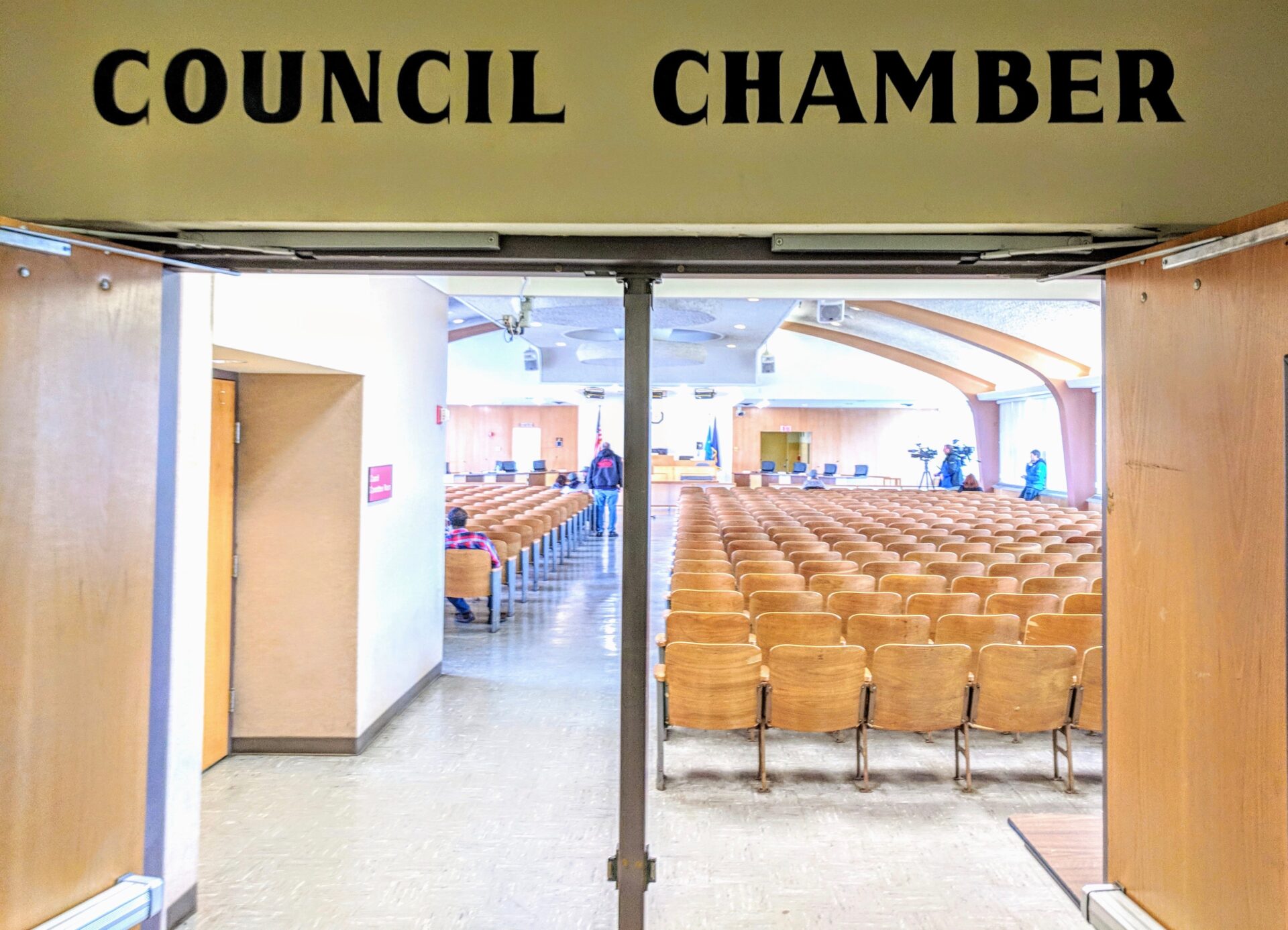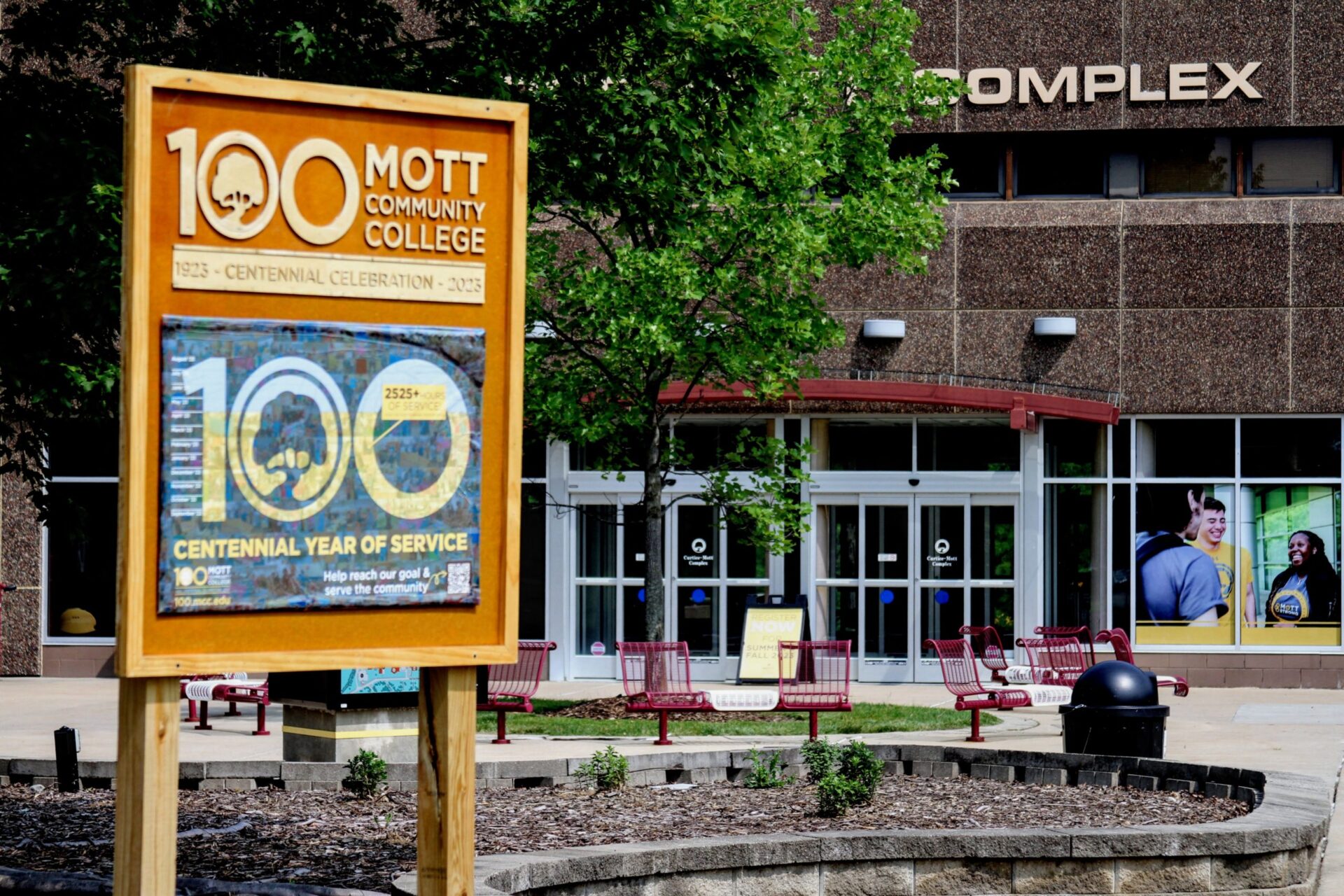by Harold C. Ford
More than 200 sixth graders from six Flint Community Schools shared results of their “community action projects” with peers, parents, press, and others Dec. 12 at Flint’s Riverfront Banquet Center. The students had been studying Type 2 diabetes in their science classes as part of a new project-based curriculum titled “Health in Our Hands: What Controls My Health?”
 The program, a research project led by the CREATE for STEM Institute at Michigan State University, has many partners: the Flint Community Schools, the University of Michigan School of Public Health, Community-based Organization Partners of Flint, the Sloan Museum, the Flint Public Library, Concord Consortium in Massachusetts and multiple partners in Detroit. Funding comes from the National Institutes of Health through their Science Education Partnership Awards (SEPA).
The program, a research project led by the CREATE for STEM Institute at Michigan State University, has many partners: the Flint Community Schools, the University of Michigan School of Public Health, Community-based Organization Partners of Flint, the Sloan Museum, the Flint Public Library, Concord Consortium in Massachusetts and multiple partners in Detroit. Funding comes from the National Institutes of Health through their Science Education Partnership Awards (SEPA).
“These kids have been…figuring out diabetes, how it occurs, why it occurs in children their age and in their family members, and how to fix it in themselves and in their community,” Project Manager Renee Bayer told East Village Magazine.
“They’re not being told what to do but they’re actually figuring things out. That’s the new way of teaching science,” Bayer said.

Renee Bayer, Health in Our Hands project manager (Photo by Harold Ford)
“Through their studies, students discover(ed) how genetic risk factors, such as poor diet, or lack of exercise, put them at risk for disease,” reported Bayer, an administrator at CREATE for STEM.
The starting point for the project was a virtual introduction to Monique, a pre-teen African American girl who actually suffers from Type 2 diabetes. “They read her story and were able to follow her daily life, what she goes through, what it’s doing to her, and how it affects the family,” Ella Greene-Moton, community activities manager for the project, said.

Lots of action underway behind Ella Greene-Moton, Health in Our Hands community activities manager (Photo by Harold C. Ford)
“They were able to identify with the things she (Monique) was dealing with day-to-day,” Moton said. “Why is this happening? How is this happening? Can it be controlled? What does healthy eating have to do with that? Do people die from this?”
“Students conducted an action research project to improve their school or neighborhood to help prevent or reduce diabetes,” Bayer said.
“Each class chose a different inquiry question to research and used a variety of data collection methods to draw conclusions and develop suggestions for community health improvement often collaborating with researchers to conduct cutting edge research,” she explained.
Freeman Elementary:

Freeman Elementary 6th Grade teacher Kathy Savoie with (l-r) Robert Neely Jr., Alannah Liggins and Timari Brown (Photo by Harold Ford)
Kathy Savoie’s science class at Freeman Elementary collaborated with Rick Sadler, professor of public health at MSU, to answer the question, “How does my neighborhood affect my exercise and walking habits?”
“Our claim was kids didn’t feel safe anymore to walk to school, to play in the neighborhoods like we used to,” Savoie told EVM.
“We backed that up with data; we gave surveys to the kids. It showed in our data that…85 percent of the kids said they would like to walk more. The data showed that kids wanted to feel safe in their neighborhoods and would walk more if they felt safe,” Savoie said.
Savoie said additional data generated by her students showed “that only 5 percent of the kids were walking to school, and only 16 percent of the places they were visiting (was) by foot.” Nearly 56 percent of the Freeman students said they avoided walking because of “stranger danger”.

Flint 6th graders Thomas Hand and Xavier Purches use an iPad to display their findings (Photo by Harold Ford)
The Freeman students involved in the project wore GPS devices for 24-hour periods at a time to gather data. It reported where they went, their mode of transportation, and distances.
Family interviews conducted by her students revealed that previous generations “walked everywhere; the neighbors knew everyone,” reported Savoie. “The families said this is what we would like to see to improve our neighborhoods.”
“The kids drew their ideal neighborhood,” said Savoie, “and suggested things like neighborhood watch groups, parent groups, kids walking together in walking groups…community gardens, clean parks, and clean neighborhoods.”
Other projects:
Approximately 340 students—nearly all of Flint’s sixth graders—were involved in the project, detailed in a Michigan State University website. Some of the other projects:
- Potter: The classes of Tom Lafferty and Karen Christian “investigated how marketing strategies can encourage healthier eating and less food waste in school.”
- Eisenhower: Darlene McClendon’s class “examined how raising awareness to the consequences of unhealthy foods affects students’ eating habits.”
- Durant-Turri-Mott: David Sutton’s classes “measured processed and unprocessed food in their diets.”
- Doyle-Ryder: Robyn Seelye’s class “studied reasons for food waste in the cafeteria.”
- Holmes: Annette Sparks’ class investigated the effect of exercise on student well-being.”
Final presentations:
During an early phase of the Riverfront Center event, students stood by their visual displays and explained their projects to passersby. Some students wandered among the visitors and actually recruited attendees, including this reporter, to come see their work. Students were enthusiastic, confident, articulate, and demonstrated a mastery of the data they had generated.
“At the final presentations, students presented their results to their peers and to judges from university and community groups,” Bayer reported. “Judges commented about how knowledgeable, enthusiastic, and well prepared the students were.”

Sharon Saddler, a community volunteer for the 6th grade program (Photo by Harold C. Ford)
One of the judges, Sharon Saddler, a community volunteer, said she was impressed with how the project extended learning beyond the classroom walls and into the homes and community. “I truly believe that the education process is not just from eight in the morning to three in the afternoon,” she told EVM. “I think a very important part of education begins at three in the afternoon and goes to eight the next morning.”
“So what we do with our children outside of school, how we involve the parents and the community in the education of our children is essential,” Saddler continued. “That’s where essential learning comes from.” Saddler is a product of Flint schools and a University of Michigan graduate.
Background on project-based instruction: an outside perspective
Plenty of modern-day education reformers are advocates for project-based instruction as one of the remedies for a national education system whose graduation rates and measures of achievement are in decline relative to the international community. One such reformer is Tony Wagner, currently a Senior Research Fellow at the Learning Policy Institute. “Much of the high school curriculum and many of the methods of teaching are nearly a century old and hopelessly obsolete,” he wrote in his 2008 book The Global Achievement Gap.
In his book, Wagner reported his disappointment with key findings from a University of Virginia study of 2,500 students in first, third, and fifth grade classes in more than 1,000 schools in 400 school districts:
- “Fifth graders spent more than 90 percent of their time in their seats listening to the teacher or working alone and only about 7 percent of their time working in groups. Findings were similar in 1st and 3rd grades.”
- “The average 5th grader received five times as much instruction in basic skills as instruction focused on problem solving or reasoning; this ratio was 10:1 in 1st and 3rd grades.”
Conversely, Wagner touted then-superintendent Jim Merrill’s leadership in Virginia Beach City Public Schools, which emphasized critical thinking and problem solving. Toward that end, VBCPS leaders created a 12-point list of attributes; six of those attributes were:
- “Students engage in authentic learning activities and/or create authentic work.”
- “Students defend positions with justification based on factual evidence and data.”
- “Students use and explain the right method of thinking (reasoning, decision making, problem solving, making judgments).”
- “Students evaluate and communicate their own thinking.”
- “Students make connections and predictions using prior knowledge.”
- “Students select, create, use, and communicate effectiveness of a variety of tools such as graphic organizers or grid paper.”
How did Flint’s sixth graders appear to match up with the six attributes listed above in the eyes of professional educators in attendance including this reporter with 44 years of experience in public education? Check. Check. Check. Check. Check. And check.
“This project is meaningful,” declared Savoie, a veteran teacher with 28 years of experience in the Flint schools. “They related to it; it made sense to them.”
“They understand what they’re doing,” observed Greene-Moton. “They don’t sound like sixth grade students, they sound like high school students.”
As for Virginia Beach City Public Schools? “The Class of 2017 has the (state geographic) division’s highest On-Time Graduation (OTG) rate and lowest dropout rate since 2008,” according to WTKR in nearby Norfolk.
Editor’s Note: Harold C. Ford is now retired from a 44-year career in public education that included: one year as a substitute teacher in Flint; 30 years as a classroom teacher in Beecher; 10 years as director of the Beecher Scholarship Incentive Program funded by the Ruth Mott Foundation; and three years as supervisor of Beecher’s Ninth Grade Academy. Now an EVM staff writer, he can be reached at hcford1185@gmail.com.








You must be logged in to post a comment.